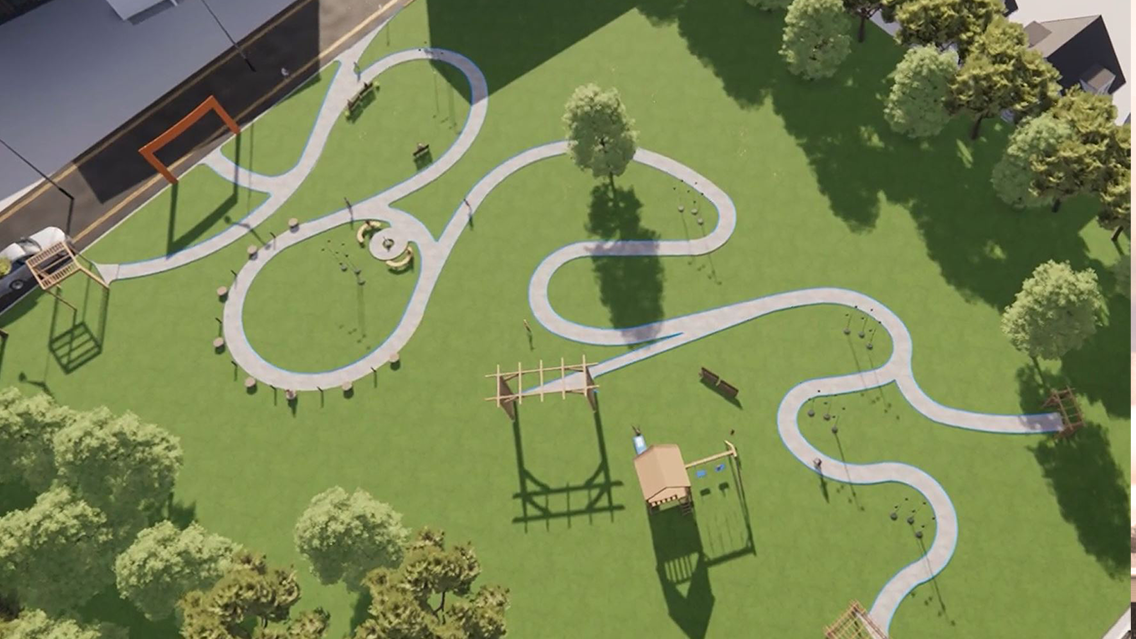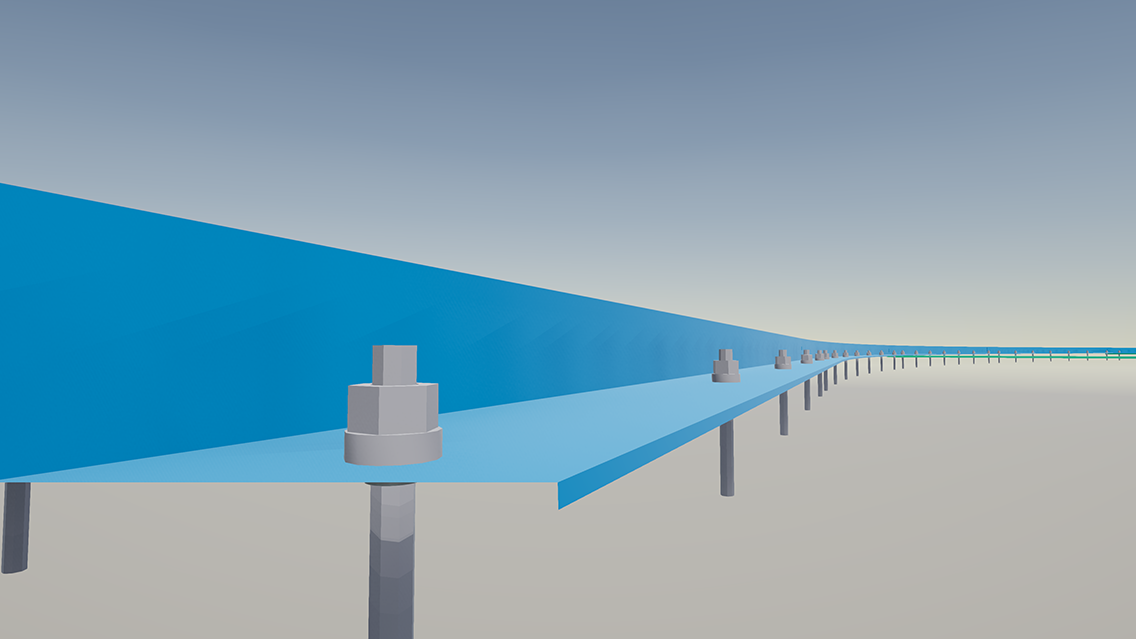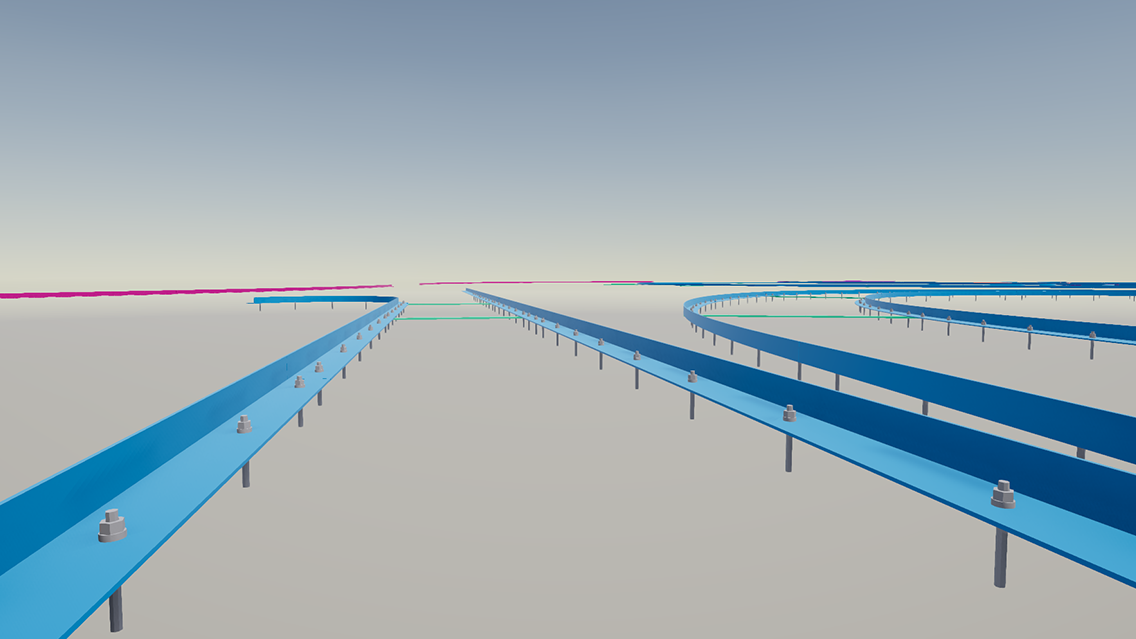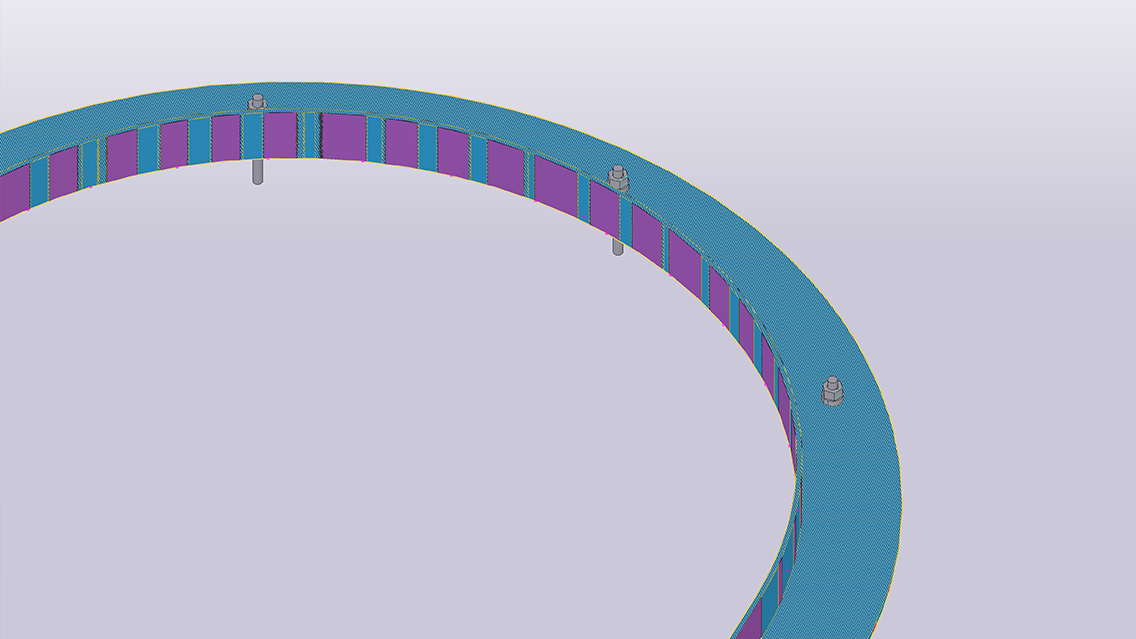The scope of the project revolved around the implementation of edge angle supports for a radial walkway, providing essential structural support and stability to the entire walkway. The primary objective was to cover the walkway's entire perimeter with angle supports that extend along the edges, effectively safeguarding the walkway and its users.
Challenges
The pivotal issue the team faced was balancing the length requirements of the expansion joints while also maintaining the appropriate radius for the walkway. Achieving this delicate balance was essential to preserve both structural integrity and aesthetic appeal.
There were several other challenges in the project as listed below:
- The team was presented with design drawings that included crucial coordinates and the radius to the centerline of the walkway. Given that the walkway had a width of 6'-0", determining the placement of angle supports along its edges seemed relatively manageable.
- However, the project became more challenging when instruction was given to incorporate expansion joints at specific locations, indicated by the magenta-coloured markings in the snapshots. To comply with this requirement, the team had to split the radial angles at the designated expansion joint locations and readjust the entire walkway area accordingly.
- In the subsequent stages, the team encountered another complexity. Some expansion joints had already been installed in the field before their involvement in the project. This meant that the team had to accurately align the new expansion joints with the existing ones in the field. Additionally, they were provided with the lengths between the existing expansion joints, but no specific coordinates for their placement. This necessitated careful analysis and meticulous measurements to ensure a seamless integration of the new expansion joints with the field-located ones.
Benefits of using Tekla
The project presented countless challenges, from initial positioning of angle supports to incorporating expansion joints and aligning them with existing field installations. Despite these complexities, with the effective utilization of Tekla Structures, the team’s diligent efforts and extensive client collaboration, the team delivered a flawless and impressive structural design.
The team's approach for the placement of angle support in the walkway involved considering the maximum angle length, with appropriate bending tolerance, and positioning the angles along the walkway. Trimble Solutions enabled the team to do precise & error-free modelling efficiently in least time. The user-friendly interface further added on to other advantages of using the software to better coordinate, collaborate and visualize.
In the process of connecting the expansion joints/angles to the concrete slab, the team utilized anchors as the primary means of attachment. Throughout the project, the team used Tekla Structures advanced modelling techniques, such as Copy Special (Rotate), Point Along the Arc Points, and construction lines/circles, to ensure the most accurate and efficient representation of the complex angles and expansion joints.




